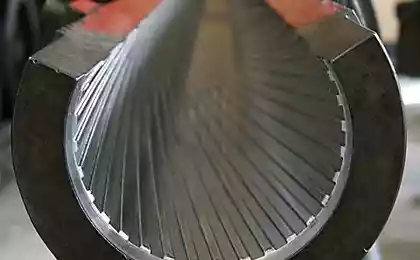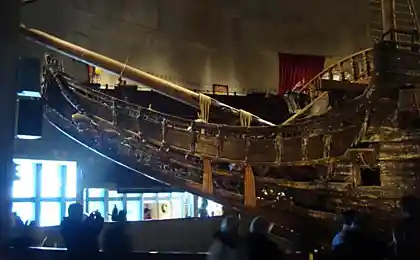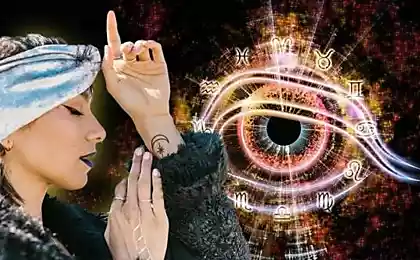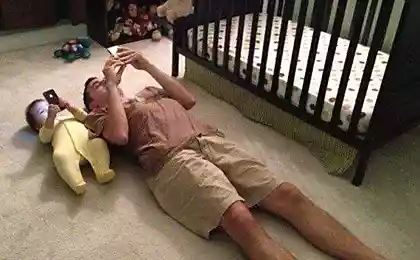646
Sparrows are not afraid of guns
The stern old weapons always gives occasion to remember the dramatic events of the past
Now almost everyone understands the need to live in peace. But, sadly, the weapon has always attracted and continues to attract people. Especially men. Especially boys. But every man in all my life a little boy so and so likes to shoot, waving scimitar or pometat dart at a straw man. There's nothing you can do. But there is every weapon has its own secret hypostasis, which reveals in the technological history of this particular type of much broader cultural formation seen in the evolution of simple device complex problems of human society.
Gun - a symbol of war. We say, "long-range guns are silent ..." or "Echoes of distant cannon fire ..." or "When the cannons speak, the Muses are silent", and each time behind it is not just a separate single shot, and a large-scale military conflict. Yes, even if a single - out of a cannon to shoot sparrows with one will not! And let us look at the guns remained silent for decades or for centuries, we are looking at them, we get a serious reason to think about the dramatic and memorable events
British coastal guns in 1900 on the island of Betio (Tarawa Atoll, Kiribati). During World War II belonged to England Kiribati islands were seized by Japan. From 20 to 23 November 1943 at Betio it was one of the bloodiest battles of the Pacific theater of fighting between US troops under the command of Julian Smith (Julian Smith, 1885-1975), and units of General Keiji Sibadzaki (柴 崎 恵 次, 1894-1943). The Americans pulled out a victory, losing 894 people. From the Japanese survived only one officer and 16 soldiers. Photo (Photo Library BC): Alexey Shevelev
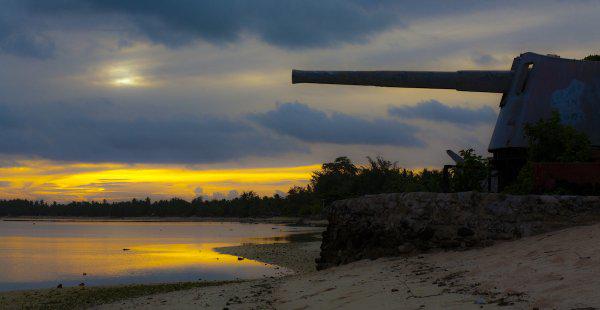
Serfdom gun XVIII century on the walls of the fortress Mehrangarh Fort in the Indian city of Jodhpur (Rajasthan). Mehrangarh Fort, who passed for 500 years, all also stands proudly above the city on the rocks in the middle of the desert plain of Marwar Tar. At the time, Jodhpur was one of the richest cities in India, controlling the trade routes connecting the southern and northern parts of the Indian subcontinent. That is what attracted the attention of the English eager to money: in 1818 Jodhpur was annexed to British India. Photo (Photo Library BC): Dmitry Vinogradov

Bombard the XVI century on the wall of the citadel in Lisbon. Bombardier were the first artillery guns that were used for the siege, and for the defense of fortresses. They were cast in bronze. The diameter of the barrel bombard could reach 1000 mm and the range of the core (or cast stone) - up to 700 m. However, the Lisbon gun so, probably, never once fired: the last time the capital of Portugal, was besieged in 1384. Then it tried unsuccessfully to take the Castilians. Photo (Photo Library BC): Andrew Chuprov

Mohammed ben Abdallah III (Mohammed Ben Abdellah al-Qatib, ok.1710-1790) - Moroccan sultan, who ruled his country in an era of peace and prosperity, once decided to make a small seaside town of Essaouira's main port of the state. This Mohammed was quite successful, but retain such a high status could Essaouira less than a hundred years, until the French and the Spaniards to seize trade in this part of the world. Now on the former power of Essaouira just reminds Fortezza da XIX century French cannons guarding the entrance to the harbor. Photo (Photo Library BC): Nikolay Pavlenko

Ivangorod Fortress. Russian mortar on Casemates machine during World War II. Defense Ivangorod by German troops in the autumn of 1914 ably led by commander of the fortress, Colonel Alex Schwartz (1874-1953), as a reward for keeping the city produced a general and was awarded the George weapons. In October 1914 he came to Ivangorod Nicholas II (1868-1918). "How do I look nice on you, on your face reflected a sense of duty," - said the Emperor Schwarz. Photo (Photo Library BC): Olga Sergeeva
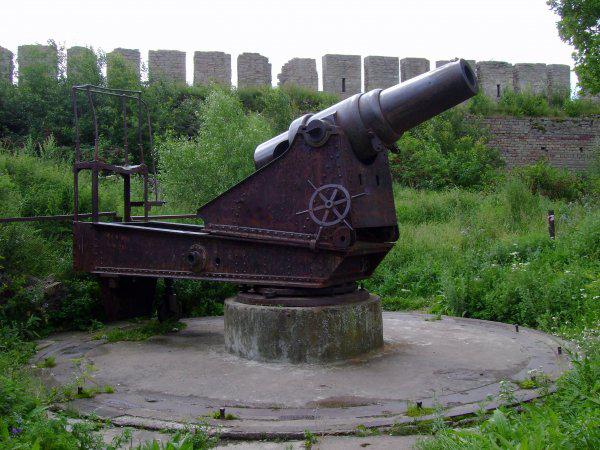
Miraculously surviving the German anti-aircraft gun in Kaliningrad (Koenigsberg). The first bombardment of the capital of East Prussia, was carried out by the Soviet Air Force September 1, 1941 (in retaliation for the bombing of Moscow). But to resume such operations "Stalin falcons" could only end of 1943 (April 23, 1943 in this theater of hostilities were first used bombs weighing 5000 kg). Since 1944, Koenigsberg actively bombed and the British, who used napalm bombs. Photo (Photo Library BC): Sergei Tiliguzov

These three-funt gun with the packet boat Vitus Bering (1681-1741) "St. Peter" were found on the island last winter Commander (now the Bering Island) - the largest of the Commander Islands. They found the sailors in 1946 specifically sent the command of the Pacific Fleet in search of guns. Information on where to look for them, contained in the diary of the navigator "St. Peter" - Lieutenant Sven Vaksel (1701-1762). Now, these finds are stored in the Aleutian museum. Photo (Photo Library BC): Dmitry Utkin

Where did this gun is on the bottom of Lake Baikal, is hard to say (you have to read the stamp, but that opportunity never arrived). It is possible that it lost the Cossacks of the order Kurbat Ivanov (? -1666) - The first Russian explorers who visited the Great Lakes in 1643. It is known that Kurbat walked on the boat all the Baikal with the aim of mapping, hitting several times in a storm - that the gun slipped overboard. Cossack efforts were not in vain. The result was the famous "drawing Baikal and Baikal epilepsy rivers" - a guide for many subsequent expeditions. Photo (Photo Library BC): Alexey Shevelev
Hence

Source:
Now almost everyone understands the need to live in peace. But, sadly, the weapon has always attracted and continues to attract people. Especially men. Especially boys. But every man in all my life a little boy so and so likes to shoot, waving scimitar or pometat dart at a straw man. There's nothing you can do. But there is every weapon has its own secret hypostasis, which reveals in the technological history of this particular type of much broader cultural formation seen in the evolution of simple device complex problems of human society.
Gun - a symbol of war. We say, "long-range guns are silent ..." or "Echoes of distant cannon fire ..." or "When the cannons speak, the Muses are silent", and each time behind it is not just a separate single shot, and a large-scale military conflict. Yes, even if a single - out of a cannon to shoot sparrows with one will not! And let us look at the guns remained silent for decades or for centuries, we are looking at them, we get a serious reason to think about the dramatic and memorable events
British coastal guns in 1900 on the island of Betio (Tarawa Atoll, Kiribati). During World War II belonged to England Kiribati islands were seized by Japan. From 20 to 23 November 1943 at Betio it was one of the bloodiest battles of the Pacific theater of fighting between US troops under the command of Julian Smith (Julian Smith, 1885-1975), and units of General Keiji Sibadzaki (柴 崎 恵 次, 1894-1943). The Americans pulled out a victory, losing 894 people. From the Japanese survived only one officer and 16 soldiers. Photo (Photo Library BC): Alexey Shevelev

Serfdom gun XVIII century on the walls of the fortress Mehrangarh Fort in the Indian city of Jodhpur (Rajasthan). Mehrangarh Fort, who passed for 500 years, all also stands proudly above the city on the rocks in the middle of the desert plain of Marwar Tar. At the time, Jodhpur was one of the richest cities in India, controlling the trade routes connecting the southern and northern parts of the Indian subcontinent. That is what attracted the attention of the English eager to money: in 1818 Jodhpur was annexed to British India. Photo (Photo Library BC): Dmitry Vinogradov

Bombard the XVI century on the wall of the citadel in Lisbon. Bombardier were the first artillery guns that were used for the siege, and for the defense of fortresses. They were cast in bronze. The diameter of the barrel bombard could reach 1000 mm and the range of the core (or cast stone) - up to 700 m. However, the Lisbon gun so, probably, never once fired: the last time the capital of Portugal, was besieged in 1384. Then it tried unsuccessfully to take the Castilians. Photo (Photo Library BC): Andrew Chuprov

Mohammed ben Abdallah III (Mohammed Ben Abdellah al-Qatib, ok.1710-1790) - Moroccan sultan, who ruled his country in an era of peace and prosperity, once decided to make a small seaside town of Essaouira's main port of the state. This Mohammed was quite successful, but retain such a high status could Essaouira less than a hundred years, until the French and the Spaniards to seize trade in this part of the world. Now on the former power of Essaouira just reminds Fortezza da XIX century French cannons guarding the entrance to the harbor. Photo (Photo Library BC): Nikolay Pavlenko

Ivangorod Fortress. Russian mortar on Casemates machine during World War II. Defense Ivangorod by German troops in the autumn of 1914 ably led by commander of the fortress, Colonel Alex Schwartz (1874-1953), as a reward for keeping the city produced a general and was awarded the George weapons. In October 1914 he came to Ivangorod Nicholas II (1868-1918). "How do I look nice on you, on your face reflected a sense of duty," - said the Emperor Schwarz. Photo (Photo Library BC): Olga Sergeeva

Miraculously surviving the German anti-aircraft gun in Kaliningrad (Koenigsberg). The first bombardment of the capital of East Prussia, was carried out by the Soviet Air Force September 1, 1941 (in retaliation for the bombing of Moscow). But to resume such operations "Stalin falcons" could only end of 1943 (April 23, 1943 in this theater of hostilities were first used bombs weighing 5000 kg). Since 1944, Koenigsberg actively bombed and the British, who used napalm bombs. Photo (Photo Library BC): Sergei Tiliguzov

These three-funt gun with the packet boat Vitus Bering (1681-1741) "St. Peter" were found on the island last winter Commander (now the Bering Island) - the largest of the Commander Islands. They found the sailors in 1946 specifically sent the command of the Pacific Fleet in search of guns. Information on where to look for them, contained in the diary of the navigator "St. Peter" - Lieutenant Sven Vaksel (1701-1762). Now, these finds are stored in the Aleutian museum. Photo (Photo Library BC): Dmitry Utkin

Where did this gun is on the bottom of Lake Baikal, is hard to say (you have to read the stamp, but that opportunity never arrived). It is possible that it lost the Cossacks of the order Kurbat Ivanov (? -1666) - The first Russian explorers who visited the Great Lakes in 1643. It is known that Kurbat walked on the boat all the Baikal with the aim of mapping, hitting several times in a storm - that the gun slipped overboard. Cossack efforts were not in vain. The result was the famous "drawing Baikal and Baikal epilepsy rivers" - a guide for many subsequent expeditions. Photo (Photo Library BC): Alexey Shevelev
Hence

Source:





